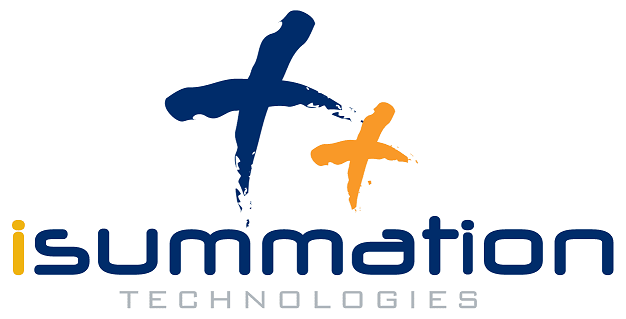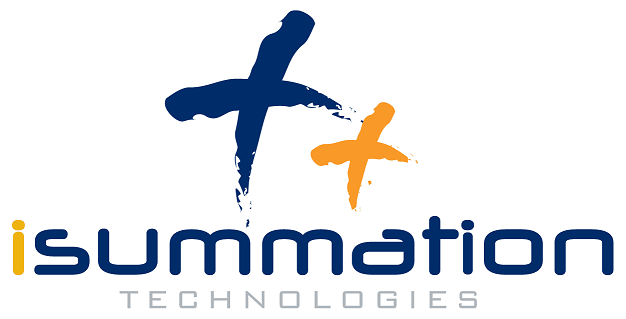- July 17, 2025
- Posted by: iSummation Team
- Category: Strategic IT

The road to a successful offshore software development process has never been an upfront one. Even in 2025, as businesses strive to digitise at breakneck speed, challenges persist. Organisations are modernising legacy systems, seeking ways to scale operations, and delivering exceptional user experiences. Offshore development remains an attractive option due to its potential for cost efficiency and scalability. Yet, it often falls short of expectations due to fragmented workflows, misaligned objectives, and uneven delivery quality.
These issues spark an essential question: why, with all the advancements in technology and methodologies, does offshore development still encounter avoidable hurdles? The answer often lies in traditional approaches to development and execution, which are ill-suited to the fast-paced, ever-evolving demands of modern businesses.
This is where Agile DevOps companies as a transformative force. By blending agility in planning and development with robust, automated operations, this methodology has redefined how offshore teams deliver results. It addresses long-standing inefficiencies and turns geographic separation into a strategic advantage for global partnerships. This blog unpacks how Agile DevOps resolves the challenges plaguing offshore software development and highlights its impact on driving innovation and results.
The Challenges of Traditional Offshore Development
While offshore software development has brought significant cost advantages and expanded access to global talent, the traditional model is riddled with limitations. These challenges often arise from linear and outdated execution approaches that are no longer compatible with the demands of today’s global, fast-moving digital landscape.
First and foremost, traditional offshore models rely heavily on siloed operations. Teams often work in isolation, following a “waterfall-style” methodology that delays communication and feedback until a project nears completion. This results in delayed timelines and product deliveries that fail to align with customer needs or updated business objectives.
Another significant issue is the lack of transparency. Often, clients have minimal visibility into project progress, hampering their ability to make informed decisions or provide real-time feedback. This, in turn, leads to frustration for all stakeholders involved.
Adaptability is another pain point. Businesses today must remain agile to respond to changing requirements, unforeseen challenges, or competitive pressures. Traditional offshore methods often lack the flexibility needed to accommodate fluctuating priorities, making it difficult to pivot effectively. The resulting project delays and rework not only drain resources but also erode client trust.
Finally, the human cost of inadequate offshore software development cannot be overemphasized. Misaligned workflows, poor communication, and unclear accountability frequently lead to burnout among team members. This lowers morale and diminishes the overall quality of the software delivered.
Offshore development, while full of potential, demands a better system, one that is transparent, collaborative, and adaptable. That is where Agile DevOps steps in.
Understanding Agile DevOps
At its core, Agile DevOps is a framework that merges the iterative, customer-focused workflows of Agile with the operational excellence of DevOps. It is not just a pairing of methodologies but a holistic system that integrates planning, development, testing, deployment, monitoring, and feedback into a seamless, cohesive cycle. This integration ensures continuous improvement and consistently high-quality results.
The Agile aspect of the methodology emphasizes adaptive planning, teamwork, and iterative development. Projects are broken down into smaller deliverables, enabling teams to prioritize high-value tasks and provide frequent, incremental updates to stakeholders. This ensures that development stays aligned with changing requirements, reducing the risk of delivering a product that no longer matches client expectations.
Alternatively, DevOps technology focuses on automating and optimizing the infrastructure side of software development. Continuous integration, continuous delivery (CI/CD), automated testing, and performance monitoring are all critical components. Together, they streamline the deployment process, minimize defects, and ensure reliability.
Key Components of Agile DevOps
To better understand its impact, here are some of its defining elements and the benefits they bring to offshore development:
The iSummation Advantage
To better understand its impact, here are some of its defining elements and the benefits they bring to offshore development:
| Agile DevOps Element | Benefit |
|---|---|
| Daily Stand-ups & Sprints | Rapid feedback & iterative improvement |
| Continuous Integration/Delivery | Faster deployments with fewer defects |
| Automated Testing | Higher software quality and reliability |
| Monitoring & Alerts | Real-time issue detection and resolution |
Together, these elements create a framework that eliminates inefficiencies and facilitates seamless collaboration, even when teams operate across continents.
The Risks of Operating Without Agile DevOps
Despite its proven benefits, many organizations continue to rely on traditional offshore development practices. Unfortunately, this operational choice carries significant risks. Here are the common outcomes of offshore projects that fail to adopt Agile DevOps principles:
Missed Deadlines and Costly Delays
When offshore teams follow a rigid, waterfall-style methodology, they often fail to deliver on time. Delays occur because feedback loops are lengthy, and unexpected challenges are addressed too late in the development cycle.
Limited Transparency
Without regular sync-ups, dashboards, or clear reporting protocols, clients have little visibility into a project’s progress. This lack of transparency breeds frustration and misaligned expectations.
Compromised Quality
Handovers between development and operations are often clunky, leading to substandard outputs. Without robust testing, the likelihood of defects rises, resulting in costly post-launch fixes.
Burnout Among Teams
Offshore teams operating without clear direction frequently experience fatigue and dissatisfaction. The absence of structured workflows and accountability exacerbates this issue, lowering overall productivity.
Given these challenges, organizations need a tailored framework that not only bypasses these risks but also turns offshore development into a reliable growth engine.
The iSummation Advantage
For businesses looking to transform their offshore development projects, iSummation offers a game-changing combination of expertise, tools, and methodologies. By integrating Agile DevOps into its core operations, iSummation has redefined offshore development to meet the expectations of modern enterprises.
Decades of Expertise
With over 20 years of experience navigating the complexities of global partnerships, iSummation has built a proven track record. Its engineers excel in a variety of tech stacks, including ColdFusion, MERN, AWS, Java, and more, making the company a trusted choice across industries.
Agile Execution Models
iSummation employs sprint-based execution for optimal efficiency. By breaking down complex projects into smaller, manageable segments, the company delivers consistent results while maintaining full transparency. Clients stay informed through shared dashboards, regular updates, and collaborative feedback loops.
Full Lifecycle Management
From the initial planning stages to post-release maintenance, iSummation offers end-to-end coverage. This holistic approach not only ensures seamless transitions between phases but also maintains focus on long-term performance.
Tailored Solutions
Whether working with cloud-native tools like Azure or harnessing the power of industry-leading platforms such as GCP, MongoDB, and others, iSummation customizes its offerings to meet each client’s unique requirements.
Metrics-Driven Excellence
By leveraging key performance indicators (KPIs) and real-time metrics, the company ensures that every decision aligns with measurable outcomes. Clients benefit from actionable insights that drive both immediate and long-term improvements.
Proven Results
Consider the case of a U.S.-based logistics company. By transitioning to iSummation’s Agile DevOps framework, the company reduced its release cycle by 40%. Even more impressively, it achieved zero critical defects for two consecutive quarters—a true testament to the reliability of the iSummation model.
Best Practices for Offshore Agile DevOps Success
For companies considering Agile DevOps for their offshore projects, the path to success hinges on adopting a few key practices:
Choose the Right Partners
Not all offshore teams are equal. Look for teams with a proven track record of Agile DevOps implementations and a collaborative, solution-oriented culture.
Leverage Cloud-Native Architecture
Cloud-native applications enhance scalability and resilience, making them ideal for distributed teams and global operations.
Maintain Transparency
Use client portals, shared dashboards, and regular sync-ups to ensure that everyone involved is on the same page.
Pursue Strategic Partnerships
Building long-term relationships with offshore teams fosters trust and leads to better results over time compared to transactional, short-term contracts.
Train Your Teams
Effective offshore development requires shared rituals and mutual understanding of KPIs. Conduct cross-team training to establish a unified workflow.
Final Thoughts
Offshore development is no longer just about writing code. It’s about creating value by addressing business problems with agility, innovation, and collaboration. Agile DevOps has emerged as the linchpin for digital transformation, equipping offshore teams with the tools they need to thrive in demanding, fast-paced environments.
With its advanced methodologies and robust engineering capabilities, iSummation serves as a trusted partner for businesses looking to innovate at scale. Whether modernizing legacy infrastructure or developing next-generation applications, the company excels at aligning its objectives with those of its clients to deliver transformative results.
By adopting Agile DevOps for your offshore projects, you don’t just improve processes, you position your organization for sustained success in an increasingly competitive marketplace. Make the leap today and start transforming challenges into opportunities for growth.


